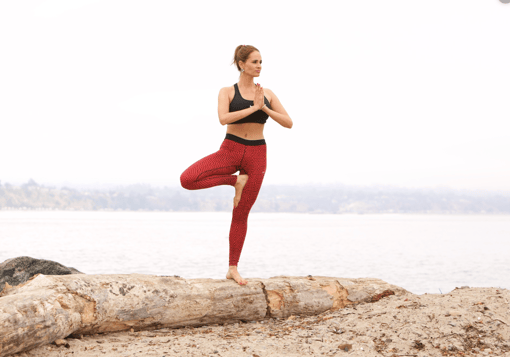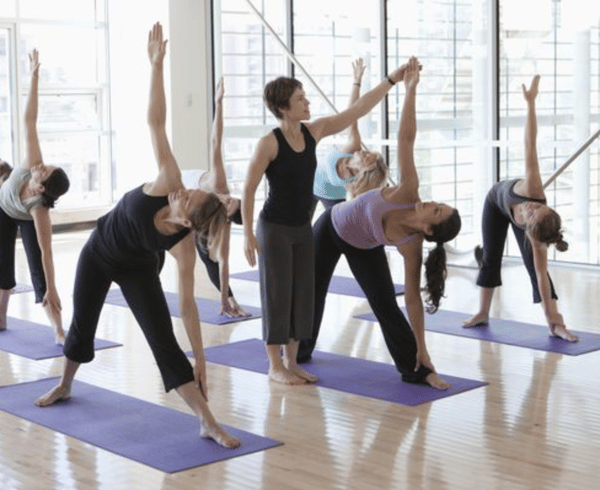Have you tried everything that medicine has to offer for your back pain, but you are still hurting?
Are you still looking for an alternative treatment that will finally help ease the pain you deal with every day?
Yoga might be that alternative.
You might have a family member that has been urging you to try yoga, claiming it worked miracles for their low back pain.
They promise that if you do yoga every day, you will work out all of the kinks that have been causing the discomfort in your back.
They are on the right track with that line of thinking.
If you are suffering from back or neck pain, though, it is good to have some baseline knowledge to ensure you stay safe during your yoga practice.
If you jump in before you really understand what you are doing, you are at risk of throwing your back out or injuring it even more.
But if you approach yoga armed with the information you need to make good decisions, you will be able to do what is right for your back and tailor a program to fit your needs.
In the article below, we will talk about how you can get started with a yoga program that will help rid you of your back pain.
Table of Contents
Talk to Your Doctor
If you're dealing with back issues, make sure you talk to your doctor or chiropractor before starting your yoga practice.
Here are a few questions you should be sure to ask your doctor:
- Are there any movements you should avoid?
- How challenging should your yoga practice be with your condition?
- Are there any modifications you should try that will keep you injury-free?
It's not always a good idea to start a yoga practice while you still have back pain.
Once the first phase of healing is over, gentle yoga can be very valuable until you can commit to the practice 100%

The Physical Benefits of Yoga
Strength
Yoga will help increase your strength in particular muscles and muscle groups.
Holding yoga poses is not intended to be uncomfortable, but it does require concentration and specific use of muscles throughout the body, similar to weight lifting.
Your muscle strength improves when you remain in the yoga poses and incorporate various movements.
Many yoga poses can gently strengthen the muscles in your back, as well as your core.
Your back and abdominal muscles are essential components of the muscular network of the spine, helping your body maintain proper posture and movement.
When you keep your back muscles well-conditioned through yoga, your back pain can be significantly reduced or avoided.
Stretching and Relaxation
Yoga incorporates stretching and relaxation that helps reduce tension in stress-carrying muscles.
Yoga requires that the individual hold gentle poses anywhere from 10 to 60 seconds or longer.
While you hold the pose, certain muscles flex while others will stretch, promoting flexibility and relaxation in the muscles and joints.
If you have low back pain, stretching is very critical.
Among other things, stretching during your yoga practice will help increase blood flow, allowing nutrients to flow in, toxins flow out, and the overall nourishment of the muscles and soft tissues in the lower back.
Balance and Alignment
Yoga poses are all designed to train the body to be healthy and flexible.
Consistent practice and application will result in improved posture and an increased sense of balance.
Your head, shoulders, and pelvis will all become properly aligned with enough practice.
Unlike many other forms of exercise, yoga helps stretch and strengthen both sides of your body equally, helping you maintain your balance.
Proper posture and alignment to help maintain the natural curvature of the spine is an essential part of reducing and preventing low back pain.
Find a Yoga Teacher
Once you've been given the all-clear from your doctor or chiropractor to begin your practice, you need to start looking for yoga teachers.
Find out how each teacher works with students that have spine conditions, as well as how much experience they have teaching people with medical problems similar to yours.
Your yoga teacher should also be able to modify your practice as needed using things like yoga blocks as well as pose modifications.
If they can't do that or they don't respect the pain you have in your back, you'll probably be better off with a different teacher.
You will also want to ask your instructor how many hours of teacher training they've had and what advanced certificates they hold.
Find out this information will help you make an informed decision about how, where, and with who you should start doing yoga to ease your back pain.
You need to discuss any and all questions and concerns with your yoga teacher before your first class so they can prepare for your unique circumstances and to avoid any unwanted surprises during class.
You also don't want to skip this step.
Unless you are a certified yoga teacher, you don't want to do this on your own.
You need to find a qualified yoga instructor that can guide you and teach you the proper ways to do all of the poses.
It's a bad idea to hop on YouTube and start doing poses and flows by yourself without any previous experience.

Yoga and Chiropractic Care
There are many benefits to practicing yoga, that if done right, can help treat and prevent your back pain.
To get the most out of your yoga practice, you should also work with a chiropractor.
Chiropractic care is an alternative form of healthcare thousands of people use every year to treat their back pain.
Your chiropractor can work with you to help speed up your healing process so that you can work with your yoga teacher as soon as possible.
Chiropractic care can heal and prevent back pain on its own, and when it is paired with yoga, you are ensuring that your back will stay healthy and strong.
Your chiropractor might even be able to recommend a few stretches and poses you can do on your own time between visits and yoga classes.
To speak with a Back Pain Chiropractor about pairing a yoga practice with chiropractic care, click the button below.
Enjoy this article? Check out another one: How your sleeping position affects back pain
-1.png?width=120&height=108&name=Ethos%20Health%20Group%2c%20(1)-1.png)







Leave a Comment